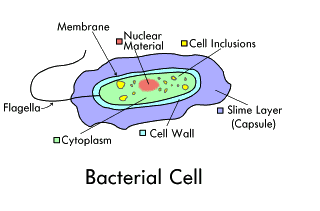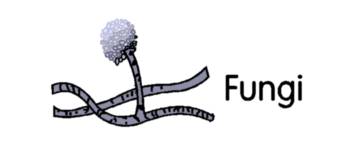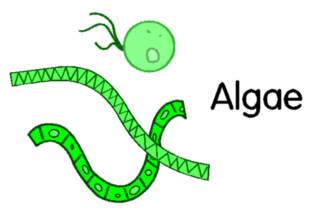

| Page 1 | Page 2 | Page 3 | Page 4 | Page 5 | Page 6 | HOME |

The initial growth phase is called log growth, since the microbes metabolize at a rate which doubles their number (cell division) and mass over a given time. Log growth rates vary from strain to strain.
At some point, the amount of food remaining begins to limit the growth rate. In this declining growth phase there are too many microorganisms and not enough food to sustain them. The endogenous respiration phase begins when the food can no longer support continued reproductive growth. Some cells remain viable or change to a dormant state (spore formation), while reproduction rates decrease. Other cells will self-destruct (autolysis), forming an additional nutrient source for the remaining living cells. Mass cell death occurs when all sources of nutrients are removed or toxins rise above a tolerable level.
Most waste situations do NOT maintain a steady organic load. When the load decreases, the cell growth declines. When the load again increases, the remaining viable cells and dormant cells (spores) are neither young enough nor are they present in sufficient concentration to be effective.
To maintain control when the lake/pond or plant BOD/COD waste load rises faster than the remaining bacteria can assimilate, reinoculating with fresh cultures will restore balance, rapidly.
In polluted waterways, excess organic wastes stimulate bacterial growth, which uses up oxygen. If artificial aeration is not added to supplement oxygen levels, the dissolved oxygen in the water becomes depleted, causing the fish to die, followed by death of the lower forms, including protozoa.
When oxygen completely disappears, the water becomes septic, acquires a black color and supports only anaerobic bacteria, which produce odors and toxic gases. If no more waste enters, the stream will slowly come back to life as various good anaerobic bacteria release oxygen during their metabolism, thus increasing the dissolved oxygen level in the waterbody, until it can again support normal aquatic inhabitants.
Mechanical aeration can be added by a variety of means from a wind generated paddle wheel to fountains to air injection systems, to maintain oxygen levels close to saturation levels. High oxygen levels insure rapid reproduction of both the bacteria and other aquatic residents, such as fish |
BACTERIA shapes are varied. Rod averages 1.5 to 3.0 microns long. Sphere diameters range from 0.5 to 1.0 microns.
FLAGELLA are the organisms generally believed to be responsible for motility (movement) of the free-swimming bacteria. |
 |
| CELL STRUCTURE is best studied in rod form. Capsule or slime layer is formed by decomposition of the cell wall. |  |
| FUNGI tend to be filamentous. These non-photosynthetic plants use organic matter for their carbon and energy. |  |
| ALGAE are green and have many shapes. Unlike fungi and bacteria, they use light for their energy. |  |
| Page 1 | Page 2 | Page 3 | Page 4 | Page 5 | Page 6 | HOME |